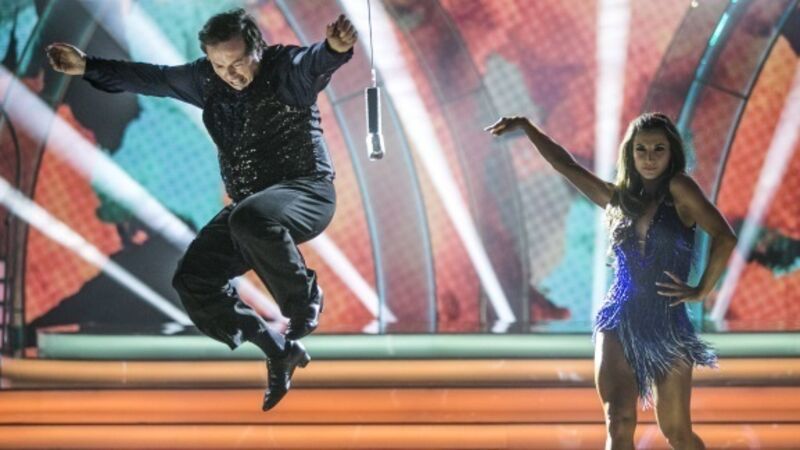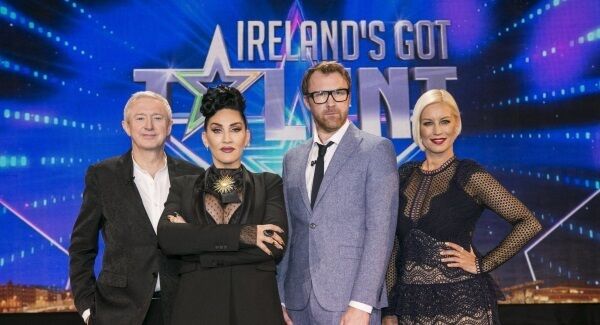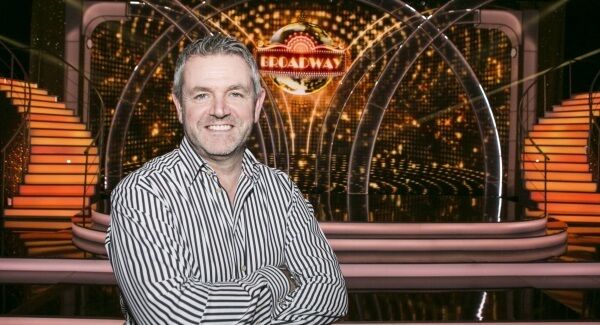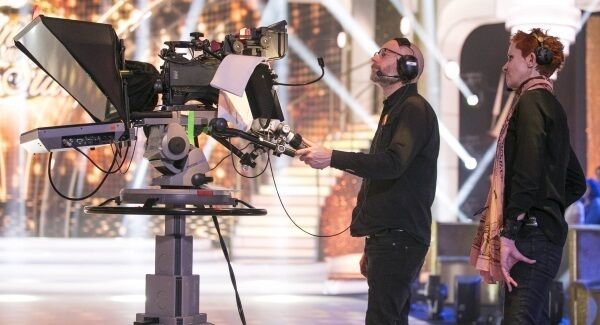Ireland’s Got Talent and Dancing With The Stars help make watching TV a family event again

It’s almost showtime for the first live broadcast of Ireland’s Got Talent and the atmosphere at the Helix theatre is reaching fever pitch.
The excitement is building and the place is hopping as fans chant and cheer the names of their favourite acts in TV3’s first live IGT show.
“Go on you good things!” shouts one cheeky punter as judges Michelle Visage and Denise Van Outen pose in their glamorous evening dresses. Louis Walsh is taking selfies with fans and Jason Byrne’s being the joker as ever, while the witty Lucy Kennedy is keeping the audience entertained as the show prepares to go to air.
If anything, the lively atmosphere is being encouraged – this is live TV, and TV3 wants the audience to be passionate and involved as the contests take to the live stage for the first time.
Ireland’s Got Talent has been an ambitious undertaking and a remarkable ratings success for TV3, grabbing 25% of audience share throughout the season. Last Saturday night’s show delivered an average audience of 333,000.
RTÉ’s equally successful Dancing With The Stars has also proven to be a massive draw for audiences. Both shows climax this weekend with their much-anticipated finals, which are likely to shatter already successful ratings figures. Their sheer success points to a growing trend in television for traditional entertaining, family friendly shows that make for a collective viewing experience.
The growth of these and other shows like Ireland’s Fittest Family, and UK shows like Strictly Come Dancing, The X-Factor and The Great British Bake Off are the antithesis of solo binge-watching a series over one weekend.
How we view programming has utterly changed, but it seems families are looking for great entertainment and a bit of razzmatazz from their TV programmes, and stars and production staff are bringing it.
“It’s good old-fashioned entertainment and you can enjoy it whatever age you are,” Louis Walsh tells me as the countdown to the first live show begins.
It’s a talent show, but it’s different because anything can happen on it. Where else would you get dogs and parrots and drag queens? All human life is there. It’s not staged, it’s not faked, and that’s the best thing about it. And people want to watch Irish people.
Walsh has a point here. However much Irish audiences love the exotic nature of UK and US television, shows like
Ireland’s Got Talent offers us an opportunity to experience our own cultural references, Irish personality and sense of humour.
Having done most of his TV work in the UK on shows like The X-Factor, Walsh says he was thrilled that a broadcaster took on such a large-scale entertainment show involving Irish people themselves.
“I always ask where they’re from, because people always want to know. That’s the great thing, we have people from all over doing all sorts of great things – with animals, with comedy, magicians. We had an awful lot of dancers, more than I ever thought we would have.”
He admits that he was surprised by the sheer scale and breadth of talent, which he says firmly debunks any notion that Ireland is too small a country to foster a show such as this.

“I couldn’t believe it. I knew it was there, there were people who had never been on TV before. A lot of people were saying: ‘We’ve seen everybody’ but no – we haven’t even scratched the surface. There’s so much more out there, too.” Shows like this give viewers a break, a sense of escapism in a world of rolling news, agrees Walsh. “It’s feel good and it’s family entertainment,” he says of IGT’s simple but winning formula.
“For TV3 it was a big undertaking, because these shows cost a lot of money. But they did an amazing job on the production. And the thing is (during auditions) we know nothing about who’s going to come out. We don’t know if it’s going to be a dog, a brilliant singer or dancers, or what it’s going to be.”
TV trends are cyclical and ever-changing, and how we view programming now and the sheer range of content available means it’s more challenging than ever for terrestrial TV channels to win the hearts and the eyes of viewers. But creating great native programming can be a winning formula.
“It’s live and it’s local, and the acts really root us in Ireland,” says Darren Smith of Kite Entertainment, which along with Green Inc is producing IGT for TV3.
“It’s really nice to do family shows like this. Growing up, with the TV you watched there wasn’t much choice. That has completely changed, and a sweet spot for terrestrial broadcasters in a small market can be in great local programming.
Ireland’s Got Talent is a celebration of national pride, and we have acts that families want to see. If you make a great entertainment show you know you’re going to get a family audience.
As the father of a five-year-old girl who’s currently lapping up the show, Smith is personally as well as professionally invested in the trend towards more family-orientated entertainment.
“It goes in cycles, and broadcasters can sometimes chase the hot topic when an audience just wants a laugh and to be entertained,” he says.
"Got Talent is the best of these shows, because it isn’t mean. It’s special for me to be making something that my friends are watching with their families, because this is a special time and it doesn’t last.”
Shows like this might be generally regarded as light entertainment, but they can be of great value in encouraging banter, conversation and interaction between family members.
Colman Noctor is a psychotherapist at St Patrick’s in Dublin and has worked across a range of child and adolescent mental health services. Noctor, author of Cop On: What It Is And Why Your Child Needs It To Survive And Thrive In Today’s World, feels that family friendly programming can have numerous benefits – especially in promoting togetherness and shared experiences.
“Togetherness is about interaction as opposed to proximity,” he says, “and in that space you’re allowing relationships to develop. “We recently did some research and focus groups in this area and what came up was that family rituals and togetherness are really important.
“There is an average of eight screens in a family home, so the idea of collective experience is important. The beauty of talent shows in particular is that they bring in an element of judgement, so you’re sharing your views in the most traditional possible sense. Closeness comes about by the sharing of experience and of meaning. It’s a process of disclosure. By watching something together, you’ve developing closeness, as opposed to just being in the room.” Noctor feels that family orientated entertainment went through a period of losing its appeal, and people began to share their views on programming on social media platforms such as twitter.
“But culturally it feels like we’re returning to a value system that’s a little more traditional,” he adds. “The programmes are timed to be screened when there’s most likely to be a house full of people, and the kids can stay up to watch it as a bit of a treat. There’s something very special about communal watching and shared experience, and I’m glad it’s coming back a little.”
Over in the Ardmore Film Factory in Bray, Co Wicklow, interest in RTÉ’s Dancing With The Stars has reached such a level that the dress rehearsal draws a packed house.
The full dress rehearsal – which takes place on Sunday afternoon - is a slick and impressive affair, and up close you can really appreciate the athleticism of the dancers and the stunning sets and costumes.
The audience is indicative of the show’s family appeal – it’s packed with parents, grandparents and children who are encouraged to root for their favourites. It’s been a smash for the national broadcaster, regularly drawing audiences of over half a million viewers, and its pulling power has seen increased ratings across all of the RTÉ One’s Sunday evening programming.
Top producer Larry Bass of ShinAwil, which produces DWTS for RTÉ, feels that finding the right celebrities to participate is key to its success. He joked that he even “gets blamed” by some celebrities having convinced them to do it. However, he makes it clear from the outset that DWTS involves months of hard work and commitment.

“When we’re casting the show we don’t make any bones about it – this is not an easy show to do,” he said in advance of tomorrow night’s final. “There’s a requirement for a minimum amount of hours to rehearse. Usually what happens is our celebrities sign up to that, but as they get further into the competition, they get more and more into it because they all want to win. Especially when you get to the second phase of the show, the second half, they want to win the show – they can smell the finishing line.
“Certainly, to succeed you’d need to have the desire to win, because you have to put yourself on the line, put your body on the line, commit yourself to significant effort, and I don’t believe you can do that unless you’re fully vested with the desire to succeed. With sports people that’s probably inherent. With business people it’s there. A lot of people who’ve worked in the entertainment business, they haven’t got to where they’ve got to without having the ability to elbow their way through all the competition.”
Bass says that meticulous planning goes into keeping the show’s sparkle alive for viewers throughout the series’ lengthy run, with a great deal of creativity and thought going into themes, music, costumes and of course, the dances.
The real magic happens every Tuesday in our production office in Sandymount when the creative team get together – lighting, set, costume, choreographers, the production team and all the technical people.
“They’re looking at the different songs and the different dances to go with those songs. That defines the costumes, the graphics, the look and feel of the set, the props. It’s all about plotting every single element of the show individually, yet bringing something new, something creative, for the watching audience. That they’re seeing a wow effect every time somebody comes out to dance.” Bass had wanted to bring the show to Ireland for some time, having seen DWTS succeed in various guises all over the world.
“In every territory where it was shown, it was the number one show, and the reason is that it appeals to the whole family. There are very few shows that do that,” he says.

“It’s that family moment. This show appeals to people whether you’re four or 84. It’s a show that allows the whole family to share – there’s something in it for everybody. It’s a real campfire moment – the show is actually consumed better together. You have more fun watching this show with people around you than if you watch it on your own. You can share comments, you’ll find there’s going to be some level of debate. And that’s hugely important in the show. There also needs to be moments of great entertainment, great intensity and jeopardy, and this show has that.”
He says that while how we watch and stream programming has changed greatly in recent years, a strong entertainment show with great production values such as DWTS remains a big draw for viewers. The show also has a firm fanbase for its spin-off Can’t Stop Dancing as well as on social media.
That’ll only increase this weekend in advance of the finale which sees Deirdre O’Kane, Jake Carter and Cork camogie star Anna Geary compete to win.
“It makes RTÉ relevant in a very competitive landscape. Not just in broadcast terms, but nowadays with platforms like Netflix and Amazon, people using their phones, and so many other distractions from X-Box to Play Station, you can have a show that commands front pages of newspapers and debate on national and local radio. And the Irish public over the last two seasons have thankfully embraced it.”












